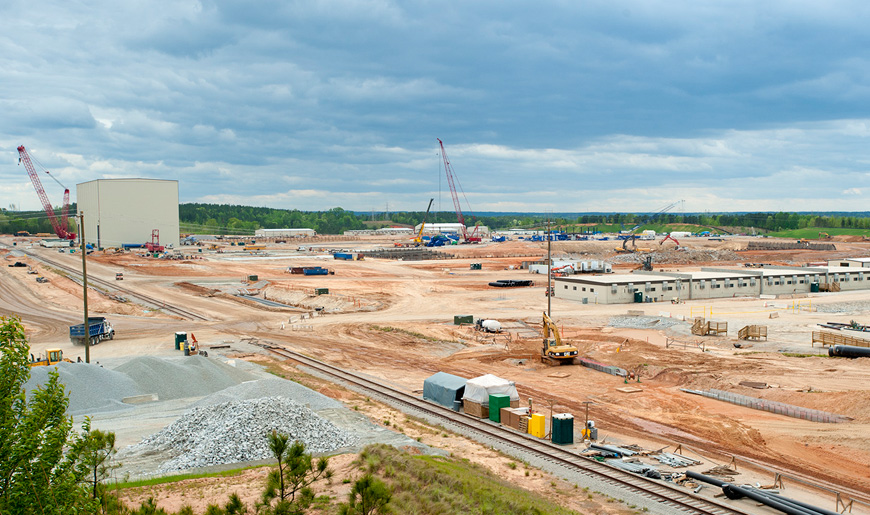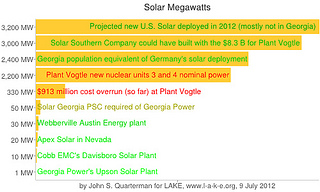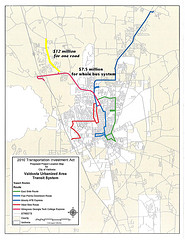Local rural Georgia electric co-op Colquitt EMC nets USDA smart grid funding! Just not for actually doing smart grid. Funny how almost no states within Southern Company's sphere of influence got any of that funding. Too bad; we could use some of those jobs and retention of existing industries.
USDA PR 11 July 2012, Agriculture Secretary Vilsack Announces Funding to Improve Rural Electric Infrastructure: Funding Includes $10 Million for Smart Grid Technology
Agriculture Secretary Tom Vilsack today announced that rural electric cooperatives and utilities in 15 states will receive loan guarantees to make improvements to generation and transmission facilities and implement smart grid technologies.
"Maintaining and upgrading rural electric systems creates jobs and
supports economic development," Vilsack said. "These loans I am announcing today will have a lasting impact on the rural landscape for generations to come. They will help ensure that rural areas can retain existing businesses, support new ones and have reliable, up-to-date infrastructure."
With this funding, USDA Rural Development moves closer to reaching Secretary Vilsack's goal to fund more than $250 million for smart grid technologies. Today's announcement includes support for more than $10 million in smart grid technologies, which help utilities make efficiency improvements to the electric grid and help consumers lower their electric bills by reducing energy use in homes and businesses.
Here's the one project in Georgia:
Colquitt Electric Membership Corporation — $20,000,000. Funds will be used to build and improve 478 miles of distribution line and make other system improvements, serving 3,284 customers.
That's my EMC! Go Colquitt EMC!
Wait, where's the smart grid project? Well, not in Georgia. In  Illinois, Iowa, Kansas, Kentucky, Michigan, Indiana, Ohio, Minnesota, North Carolina (two in that state), Pennsylvania, South Dakota, and Texas. The only state in Southern Company's "Competitive Generation Opportunities" area with a smart grid project on that list is North Carolina. Just as North Carolina is the only state in that area with a renewable energy standard.
Illinois, Iowa, Kansas, Kentucky, Michigan, Indiana, Ohio, Minnesota, North Carolina (two in that state), Pennsylvania, South Dakota, and Texas. The only state in Southern Company's "Competitive Generation Opportunities" area with a smart grid project on that list is North Carolina. Just as North Carolina is the only state in that area with a renewable energy standard.
Southern Company and its child Georgia Power, successfully repelling electric innovation since 1973!
-jsq











